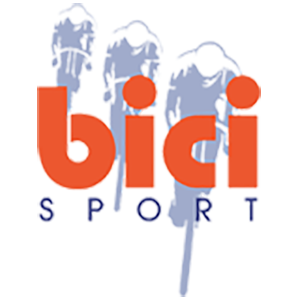Many bicycle accidents involve falling heavily on the shoulder which can result in a fractured collar bone (clavicle). A fractured clavicle is extremely painful initially, but it very rarely involves surgery and usually heals within 6 weeks.
So you’ve crashed and you have severe pain in your shoulder, now what? Get help! Although a broken collar bone is easy to identify, many other injuries can also occur. Immobilize your shoulder with a sling. You can use an extra tube, an extra shirt, even a camel back, and then get to a doctor right away (Emergency Department). It is important to get x-rays to be sure the shoulder joint isn’t dislocated and to see the extent and location of the fracture. Although surgery is rarely indicated, there are instances when surgery is required. Once the clavicle fracture has been confirmed and other ‘bad things’ ruled-out, the next question becomes…’how do I get back on my bike as soon as possible?’
Generally, you’ll be in a ‘sling’ for the first few days as the initial phase of recovery involves rest and pain control. After the first few days, the pain begins to decrease and you can begin to ride on a stationary trainer without bearing any weight on your affected shoulder/arm. You can keep your arm in the sling for comfort. This allows you to maintain your fitness during your recovery. After a few days, you can begin to put some weight on your arm and gradually increase as tolerated. Be aware, too much too soon can result in delayed healing and prolong your recovery. As a general rule, if it hurts, you’re doing too much. An indoor trainer (not rollers!) can be boring but experience has shown that a solid indoor training program with intervals can bring you back stronger than your were before your crash. You can’t change the fact that your crashed and broke your collar bone, but your can focus on the future and come back stronger!
Doing a physical therapy program to maintain the range of motion in the shoulder joint and strengthen the shoulder muscles is a good idea. You can use light, free-weights or rubber-band cords to strengthen the rotator cuff muscles and muscles surrounding the shoulder. Start slowly with low resistance/weights and gradually increase as tolerated by pain. This will help stabilize your shoulder when riding hard and theoretically can protect you in the event of another fall. You can also work on stretching for your legs to improve your flexibility and exercises for your abdominal and back muscles to improve your core strength during this time.
If all is going well and you are healing as expected you can begin to ride on the road with a training partner or alone at 2-3 weeks when you have full motion, full strength and no pain. You shouldn’t attempt to ride in a large group or race until the bone is completely healed and you have been cleared by your doctor. Adequate bone healing is confirmed on x-ray. This usually takes between 6-8 weeks. There should be no pain with direct pressure over the fracture site. You should be able to ride in and out of the saddle, sprint, corner and distribute equal amounts of weight through your injured shoulder without any pain. It is important to be sure your can handle your bike safely before returning to competition.
It is likely that there will be a sizeable ‘bump’ at the site of the fracture. Although this sometimes looks weird, you don’t have to worry because this is common and is the ‘callus’ or site of bone healing. Through a process known as ‘remodeling’ this will improve over time, but you will likely have some mild deformity, as a badge of honor, for the rest of your cycling days. Although a fractured clavicle is scary and painful initially, with a proper rehabilitation program you can maintain your fitness and return to racing safely and effectively in a fairly short period of time.
Ride smart, ride safe, ride swiftly!














